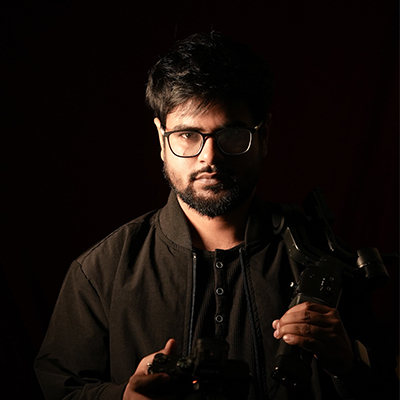

(Filmmaker, 8+ Years of Experience)
Picture this: You’re standing in a beautiful street in Paris, camera in hand, and someone next to you is capturing magic with a tiny, lightweight lens. No zoom ring, no buttons, just glass and confidence. Curious, you ask, “Hey, what lens is that?” They smile and say, “Just a 50mm prime.”
Ohh Wait… just a prime lens? What does that even mean?
If you have ever scratched your head hearing a photographer talk about prime lenses like they’re magical unicorns, you’re not alone. Let’s break it down—and trust me, by the end, you’ll want one, too.
Prime lens, in the simplest terms, is a camera lens with a fixed focal length. That means it does not zoom in or out. A 50mm lens stays 50mm—no zooming in on your cat from across the room unless you physically walk closer.
Yup. And that’s kind of the beauty of it.
When I first got my hands on a 35mm prime, I was skeptical. I missed the zoom, the flexibility. But then something shifted. My photos were sharper. My composition improved. I started to see differently. I had to move, adjust, think—and my photography actually leveled up.
Prime lenses tend to be sharper, because they’re built for just one focal length. It is like a chef’s knife that is designed only for chopping which is super efficient at its one job.
Most prime lenses come with wide apertures like f/1.8 or even f/1.4. Translation? They can see in the dark better than your average lens. Perfect for those moody café shots or dreamy night portraits.
“When I shot my first wedding reception with a 35mm f/1.4, it was like someone turned on the lights.” – A friend who never looked back.
That dreamy, creamy background blur you see in portraits? Prime lenses are bokeh kings and queens. Wide apertures help isolate your subject and melt everything else away.
No bulky glass here. Most prime lenses are compact and lightweight. Great for street photography or travel when you don’t want to look like you’re carrying a telescope.
Here’s where it gets interesting: the lack of zoom actually pushes you to be more creative.
Think of it this way—using a prime lens is like painting with a limited palette. It forces you to focus, to move your feet, to think about angles and framing. You’re no longer passively zooming in; you’re engaging with your environment.
“Zoom with your feet,” as they say.
I remember photographing a jazz band in a tiny New York bar. I only had my 50mm. At first, I cursed the lack of zoom. But as I danced between tables and leaned into the music, I found myself in the moment. The shots felt alive, intimate—like the lens had disappeared, and only the story remained.
Honestly? Everyone—at least once.
Whether you’re a beginner or a seasoned pro, using a prime lens teaches you skills you can’t get from a zoom. It sharpens your eye, simplifies your gear, and deepens your connection to the scene.
Great for:
You see the pattern? Simplicity + quality = magic.
You know those minimalist bikes with no gears or brakes? At first, they seem limiting, even frustrating. But once you get the hang of it, you start to feel every bump, every turn—you’re connected. A prime lens is like that. Less gear, more feeling.
Look, I love zoom lenses. They’re practical. Versatile. But there’s something timeless about a prime. It’s honest. Pure. Like having a conversation without distractions.
When I travel light, when I want to fall back in love with photography, when I just want to see—I reach for my trusty 50mm.
So, if you haven’t tried one yet, maybe it’s time.
Because sometimes, less really is more.
